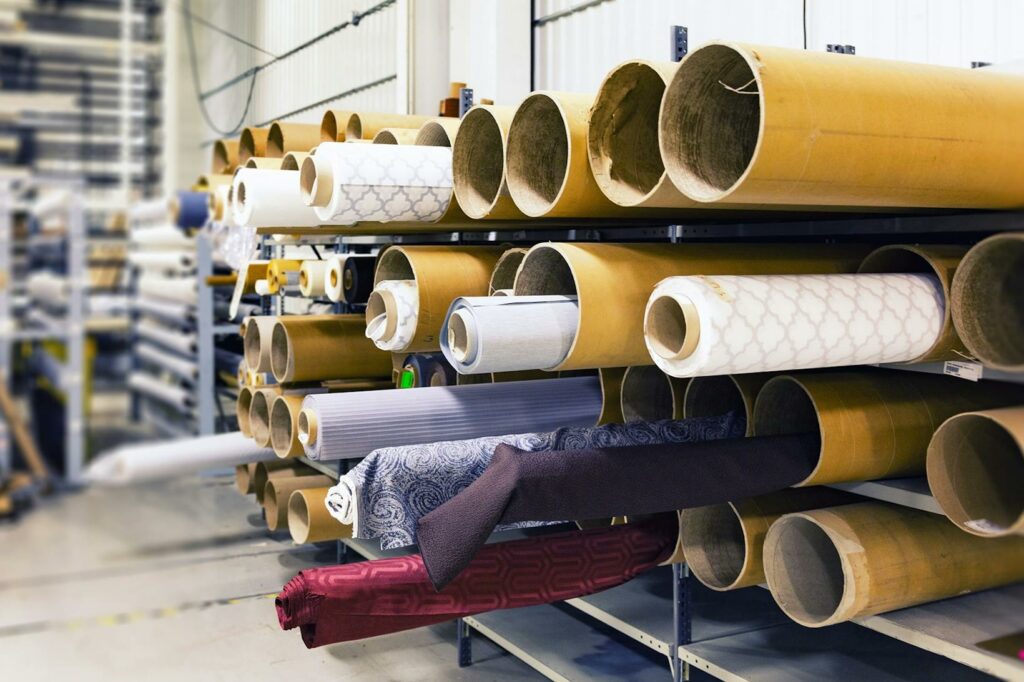Digital textile printing revolutionizes the way fabrics are designed and produced in today’s fast-paced world. By merging technology with traditional textile manufacturing, this innovative process offers endless possibilities for creating unique and customizable designs. From intricate patterns to vibrant colors, digital textile printing allows for unparalleled precision and detail that traditional methods struggle to match.
 With the ability to seamlessly transfer digital designs onto various types of fabrics, digital textile printing has become a game-changer for the fashion and home decor industries.
With the ability to seamlessly transfer digital designs onto various types of fabrics, digital textile printing has become a game-changer for the fashion and home decor industries.
Designers and manufacturers can now bring their creative visions to life with greater efficiency and flexibility. This article delves into the intricacies of digital textile printing, exploring its benefits, applications, and the future trends shaping this dynamic field.
Digital Textile Printing
Digital textile printing has revolutionized the textile industry by modernizing traditional methods and incorporating cutting-edge technology. This evolution has significantly impacted textile quality, leading to enhanced designs and production efficiency.
From Traditional Methods to Modern Techniques
Digital textile printing has transitioned the industry from labor-intensive conventional methods to advanced techniques that offer greater precision and customization. Unlike traditional processes that involve time-consuming steps like screen printing or rotary printing, digital printing enables direct application of designs on fabrics using inkjet technology. This shift has streamlined production processes, reduced waste, and allowed for on-demand printing, catering to the growing demand for personalized and sustainable textile solutions.
Impact of Digital Advancements on Textile Quality
The integration of digital advancements in textile printing has elevated the quality standards within the industry. By leveraging digital technology, manufacturers can achieve remarkable detail, vibrant colors, and complex patterns with unmatched accuracy. This transformation has not only enhanced the visual appeal of textiles but also improved durability and consistency in the printing results. Additionally, digital printing minimizes the use of water and chemicals, contributing to a more eco-friendly and sustainable approach to textile production.
Key Technologies in Digital Textile Printing
Digital textile printing leverages advanced technologies to revolutionize the textile industry, enabling precise customization and vibrant designs. Two key technologies driving this transformation are Inkjet Technology and Sublimation Processes.
Inkjet Technology
 Inkjet Technology in digital textile printing involves the precise deposition of inks onto fabric through inkjet printers. These printers accurately apply ink to create detailed designs with a wide range of colors.
Inkjet Technology in digital textile printing involves the precise deposition of inks onto fabric through inkjet printers. These printers accurately apply ink to create detailed designs with a wide range of colors.
By directly printing the desired pattern onto the fabric, Inkjet Technology eliminates the need for screens and plates, making it a cost-effective and efficient solution. This technology offers flexibility in design variations, quick production turnaround times, and the ability to produce small print runs economically.
Sublimation Processes
Sublimation Processes in digital textile printing involve the transfer of a design from paper to fabric using heat and pressure. Sublimation inks convert from a solid to a gas state under heat, permeating the fabric fibers and resulting in vibrant, long-lasting prints. This method ensures superior color reproduction, sharp details, and excellent wash fastness. Sublimation Processes are ideal for producing intricate designs, photographic prints, and patterns with a high level of detail. This technology is widely used for sportswear, fashion apparel, and home textiles due to its durability and color brilliance.
Benefits of Digital Textile Printing
Digital textile printing offers several advantages that have revolutionized the textile industry. It enables cost-effectiveness, efficiency, enhanced design potential, and customization, setting a new standard for textile production.
Cost-Effectiveness and Efficiency
Digital textile printing is a cost-effective solution as it eliminates the need for traditional printing methods that involve costly setup fees for screens and plates. With digital printing, manufacturers can produce smaller runs economically, making it ideal for on-demand printing and reducing excess inventory.
Enhanced Design Potential and Customization
 One of the key benefits of digital textile printing is its enhanced design potential and customization capabilities. Designers can create intricate patterns, detailed designs, and vibrant colors with precision.
One of the key benefits of digital textile printing is its enhanced design potential and customization capabilities. Designers can create intricate patterns, detailed designs, and vibrant colors with precision.
This customization allows for unique and personalized textile products tailored to specific client requirements, giving designers the creative freedom to experiment and innovate in ways not possible with traditional printing methods.
Digital textile printing has revolutionized the industry by merging technology with traditional practices to create customizable designs efficiently. This innovation has modernized the textile printing landscape, offering cost-effective solutions and expanding design possibilities. The dynamic future of digital textile printing holds immense potential for innovation and creativity in the ever-evolving textile industry.



